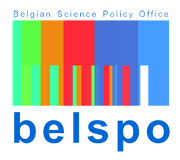Planet TOPERS Belgian team has proposed an EOS (Excellence of Science) project ET-HOME « Evolution and Tracers of the Habitability Of Mars and Earth ». It was a full success!

Strengthened by the individual expertise within Planet Topers, we addressed habitability in a synergistic approach, not only by examining life’s envelope on Earth (the range of extreme conditions), but also by considering all geological aspects important for habitability, such as the exchange and interactions (including feedback mechanisms) between the different geochemical reservoirs (core, mantle, crust, atmosphere, hydrosphere, cryosphere, and biosphere) of the terrestrial planets or moons of our Solar System, as well as the effects of asteroids and comets impacts, the consequences of mantle overturn and of the onset (or not) of plate tectonics. The synergy also relies on observations made via analysis of meteorites, which constrain the possible scenarios of planetary evolution, some 4.5 billion years ago.
Besides providing a better understanding of the origin and sustainability of life on terrestrial planets, we propose, within the present project, to improve our insight into key environmental contexts where potential habitats – and possibly life – can/could exist (or existed) in the Solar System; in particular, the (early) Earth and Mars, which originally shared many characteristics. The new context of coming space missions makes it possible for us to go beyond the previously addressed questions. We refer here to the exploration and astrobiological initiatives of space agencies, such as the joint ESA/Roscosmos ExoMars, in which Planet Topers members are deeply involved with three instruments at Principal Investigator level and with at several Co-Investigator level.
The new Coordinator is Vinciane Debaille from ULB.
Planet TOPERS are interested in the Earth atmospheric evolution and in particular in Antarctica. Atmospheric composition change is a main driver of present and near-future climate change with airborne particles playing a major role therein. But the aerosol fluxes and sources in Antarctica and its closely associated Southern Ocean are poorly constrained, in particular the particle chemistry. Antarctica is considered the best-preserved region on Earth from anthropogenic emissions. However, the impact of anthropogenic airborne particles and pollutants could be significantly larger than expected. Furthermore, a detailed understanding of present-day atmospheric transport pathways of particles and of volatile organic compounds (VOC) from source to deposition in Antarctica remains essential to document biogeochemical cycles and the relative importance of natural and anthropogenic compounds, which are not well constrained at the moment. The project CHASE (Unravelling Particle Chemistry in Dronning Maud Land (Antarctica): from atmosphere to surface snow) will provide detailed physical-chemical analyses of both atmospheric and surface snow particles as well as of VOCs and thoroughly investigates their atmospheric transport pathways. Samples were taken both near the Belgian research station Princess Elisabeth Antarctica (PEA) and on a ±200km transect from the plateau to the coast.

The mission took place from 14/11 to 23/12 in 2017 as part of the BELSPO project CHASE. The objectives of the project are achieved, even exceeded, since the group installed five sampling sites themselves from the plateau to the coast via the PEA (Princess Elizabeth Antarctica) station. Each site is equipped with a least three passive samplers (for the analysis of suspended dust organic components, and trace elements, metallic or not). At each site, snow bottles were also collected (for the analysis of trace elements and isotopic compositions of deposited atmospheric particles). Moreover, in 100m from the station, a container has been equipped with three active pumps to collect a larger volume of dust on filters. More Pictures and explanations on: http://www.bncar.be/.
Planet TOPERS Belgian team has organized a worshop entitled ‘Geoscience for understanding habitability in the solar system and beyond’ in Furnas, São Miguel, Azores, Portugal, from 25 to 29 September 2017. It was a full success!
More information on the workshop here.
Hankbook for the participants here.
Abstract book here.

This conference deals with fundamental issues of planetary habitability, i.e. the environmental conditions capable of sustaining life, and how interactions between the interior of a planet or a moon and its atmosphere and surface (including hydrosphere and biosphere) affect the habitability of the celestial body. The evolution of planets (including the Earth) is driven by its internal energy sources (radiogenic sources and energy stored during accretion) and depends on the composition, structure, and thermal state of their core, mantle, lithosphere, crust, and on interactions with a possible ocean and atmosphere and – in case of the Earth – with a biosphere. Convection of the rocky mantle is the key process that drives the evolution of the interior: it causes plate tectonics, controls heat loss from the metallic core (which generates the magnetic field) and drives long-term volatile cycling between the atmosphere/ocean and interior. Cycling of water and carbon dioxide between the atmosphere/ocean and interior is also a key process that is thought to regulate habitability because the more carbon dioxide we have in the atmosphere, the higher is the temperature, and the more weathering we have. Plate tectonic induces larger outgassing and is therefore a key factor for atmosphere generation. At the same time, the volatile content of the surface environment, particularly the presence or not of liquid water, is thought to have a large feedback on the interior, for example by influencing of the existence or not of plate tectonics. Partial melting and mantle depletion extract water from the interior to the surface. Outgassing and volcanism are also related to that. It is necessary to consider a coupled atmosphere-interior evolution for the understanding of habitability.
Thanks to our sponsors and our networks, we could build up a program as proposed previously and aggregate excellent speakers and participants. We could also invite young career scientists, which provided very interesting fresh mind views. This workshop gathered 68 participants and was organized in terms of review talks, key notes, oral and poster presentations, and discussions, for a total of 38 oral presentations and 10 posters. It addresses the fundamental understanding of habitability in terms of geophysics of planets. We have reached the critical mass for excellent fruitful discussions and could reach our aims of better understanding the habitability of planets in terms of geoscience inputs.
Full report here.
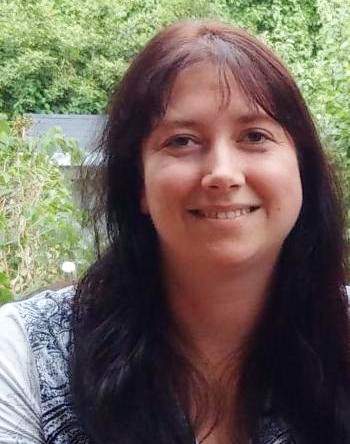
The annual contest of the Academy requested an original contribution on the long-term evolution of planets and moons either in the solar system or in other star systems. Lena Noack answered the contest with a manuscript on "Constraints on the habitability of Earth-like exoplanets and exomoons: insights from geophysical modelling".
Mankind has always wondered where it came from, and whether there is life not only on Earth, but also on other planets. To find life outside of Earth, the first question is where life could, in theory, survive. These planets, that could be able to host life, are called habitable planets. In the last decades - being so far unsuccessful in finding extra-terrestrial life in the solar system - the focus turned towards the goal of finding extra-solar habitable planets. Understanding what makes a planet habitable can lead to future detection of life outside of the solar system. The manuscript describes a geophysical approach in that direction by investigating the influence of the interior of a planet or moon on the possible surface habitability of terrestrial planets, especially the ability of long-term volcanic outgassing and plate tectonics.
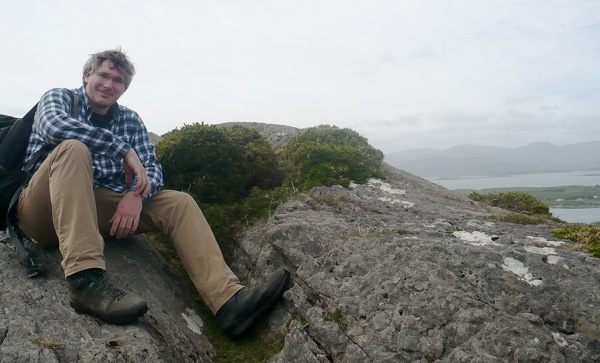
On November 09th 2016, EGU has named Cedric Gillmann as the recipient of next year’s Planetary and Solar System Sciences Division Outstanding Early Career Scientists Award of the European Geosciences Union, along with the 47 other recipients of next year’s Union Medals and Awards, Division Medals, and Division Outstanding Early Career Scientists Awards. These individuals, from both European and non-European countries, are honoured for their important contributions to the Earth, planetary and space sciences. They will receive their prizes at the EGU 2017 General Assembly, which will take place in Vienna on 23–28 April.
Cedric Gillmann is a postdoc at the Royal Observatory of Belgium and Planet TOPERS member. He is currently investigating the consequences of meteoritic impacts on habitability and the evolution of surface conditions on Venus and terrestrial planets.
Mikael Beuthe and colleagues of ROB modeled the icy shells of Enceladus and Dione as global icebergs immersed in water, where each surface ice peak is supported by a large underwater keel. Using the data from the Cassini mission to Saturn and this model, they show that a subsurface ocean lies deep within Saturn’s moon Dione. Two other moons of Saturn, Titan and Enceladus, are already known to hide global oceans beneath their icy crusts, but a new study suggests an ocean exists on Dione as well. The study is published online this week in Geophysical Research Letters.
Original article:
Mikael Beuthe, Attilio Rivoldini and Antony Trinh, “Enceladus’ and Dione’s floating ice shells supported by minimum stress isostasy”, Geophysical Research Letters, published online.
http://onlinelibrary.wiley.com/doi/10.1002/2016GL070650/abstract
More information here.
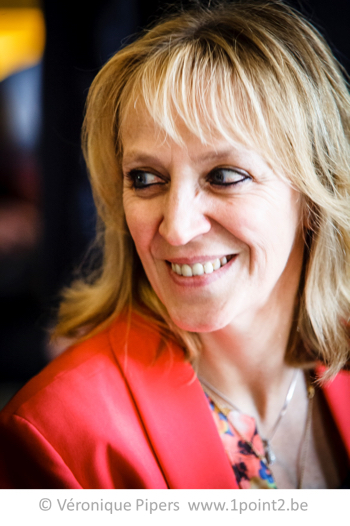
On July 21st 2016, the American Geophysical Union (AGU) has named its 2016 class of medalists, awardees, and prize recipients. Thirty-two individuals are recognized this year for their dedication to science for the benefit of humanity and their achievements in Earth and space science. They have been elected from the 60 thousand members of AGU. This year in particular, the Charles A. Whitten Medal has been presented to Prof. Veronique Dehant from the Royal Observatory of Belgium (and also from the Université catholique de Louvain – UCL), the Coordinator of the Planet TOPERS IUAP. The Charles A. Whitten Medal is given in even-numbered years to one honoree in recognition for “outstanding achievement in research on the form and dynamics of the Earth and planets.” The honoree will be recognized during the Honors Tribute at the 2016 AGU Fall Meeting, which will take place on Wednesday, 14 December 2016 in San Francisco.
More information here.
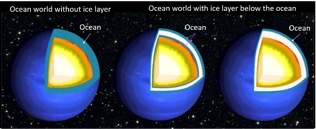
In this highlighted paper, exoplanets having liquid water at their surface are the focus in the frame of the search for life outside of Earth. These planets, located in the so-called habitable zone, are ideal candidates for hosting alien life.
An international research team led by Lena Noack and including Attilio Rivoldini and Tim Van Hoolst of the ROB have examined the habitability of water-rich planets in the habitable zone. These possible ocean words can contain thousands of Earth oceans and resemble a Neptune-like planet with liquid water at the surface. Deep down in the water, the high pressure forces water molecules to stick to each other and a high-pressure ice forms, cutting off life-essential nutrients that come from the rocky mantle. Still, these planets might be able to host life under the ice layer, as heat flowing out from the interior may be able to melt the high-pressure ice from underneath, leading to a thin habitable niche, as was now published in the scientific publication Icarus. Noack and colleagues investigated under which conditions this lower habitable ocean layer can exist. They find that less-massive planets or planets with small water fractions might be more likely to host life than planets with masses several times Earth's mass and substantial amounts of water.
Original article:
http://www.sciencedirect.com/science/article/pii/S001910351630149X
Nature Physics highlights article:
http://www.nature.com/nphys/journal/v12/n7/full/nphys3822.html
New Scientist article:
https://www.newscientist.com/article/2093631-ocean-worlds-could-host-life-under-layers-of-high-pressure-ice/
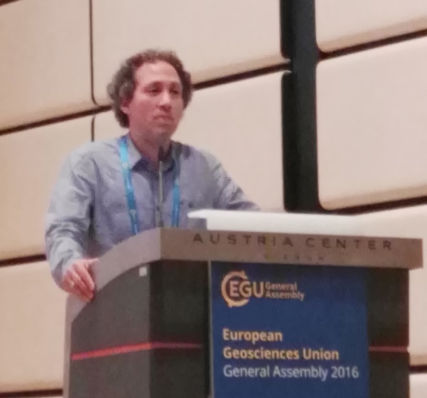
After two years of service at the EGU, this April EGU 2016 was the last General Assembly where Ozgur Karatekin served as President of the Planetary and Solar System Sciences Division (see photo). Ozgur had a lot of visibility there during these last years. Although his duties as President will be ove, he will not finish his work for EGU as he has accepted to serve as new Award Committee Chair. Lena Noack was also serving EGU as Young Scientists Representative of the Planetary and Solar System Sciences Division during that period and will continue to serve EGU at the Council level. Cédric Gillmann and Elodie Gloesener were involved in the outreach activities of Planetary Science for EGU.

On 1st of April 2016, the drilling of the ~ 200 km Chicxulub crater offshore Yucatan begins. The goal of this 1.5 km drilling project is to collect cores within this uniquely preserved impact structure that was formed some 66 million years ago by the collision of a ± 10 km asteroid or comet with planet Earth. The incredible amount of energy released by the impact perturbed the Late Cretaceous global system and most likely caused the mass extinction that let to the demise of the dinosaurs and more than 60% of the Earth fauna and flora.
This expedition 364 is a joint IODP (International Ocean Discovery Program) and ICDP (International Continental Scientific Drilling Program) ECORD (European Consortium for Ocean Research Drilling) is responsible for the drilling. See flyer.
The VUB Analytical-, Environmental- & GeoChemistry unit participates in the adventure and will be responsible for the study of the recovered cores to understand the cratering process and the subsequent effects on the biosphere, along with international research groups from the US, UK, China, Canada, Australia, Mexico, Japan and 5 other European countries. Check http://www.eso.ecord.org/expeditions/364/364.php for regular updates of the expedition.
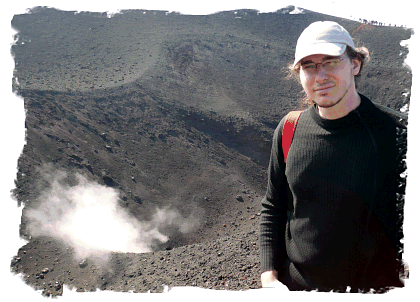
The contest requested an original contribution, experimental or theoretical, on the habitability and / or the geophysics of planets and moons of the solar system. Cédric Gillmann answered the contest with a manuscript entitled “HOME: HOw to Make an Earth?” or “Modelling the emergence of habitability through the long term evolution of a terrestrial planet: focus on Venus”.
The distribution of water and carbon dioxide between the fluid envelopes (i.e. atmosphere and possibly oceans) and the interior of a terrestrial planet is a key to the evolution of its surface environment, and hence its long-term habitability. Indeed, this “fluid envelope” evolves with time due to the action of the planet’s interior (mantle and crust), atmospheric loss to space and brutal events such as large impacts. In his investigations, Cédric Gillmann goes beyond the study of the mechanisms involved in the evolution of terrestrial planets – most of the mechanisms are at least basically understood now – and considers the planet as a complex system where all those processes interact. He aims at understanding a planet as a whole, focussing on the interactions between the processes. As a perfect place to test this coupled approach, he chooses to study Venus: a planet comparable to the Earth but that has followed a very different path to its present-day conditions.
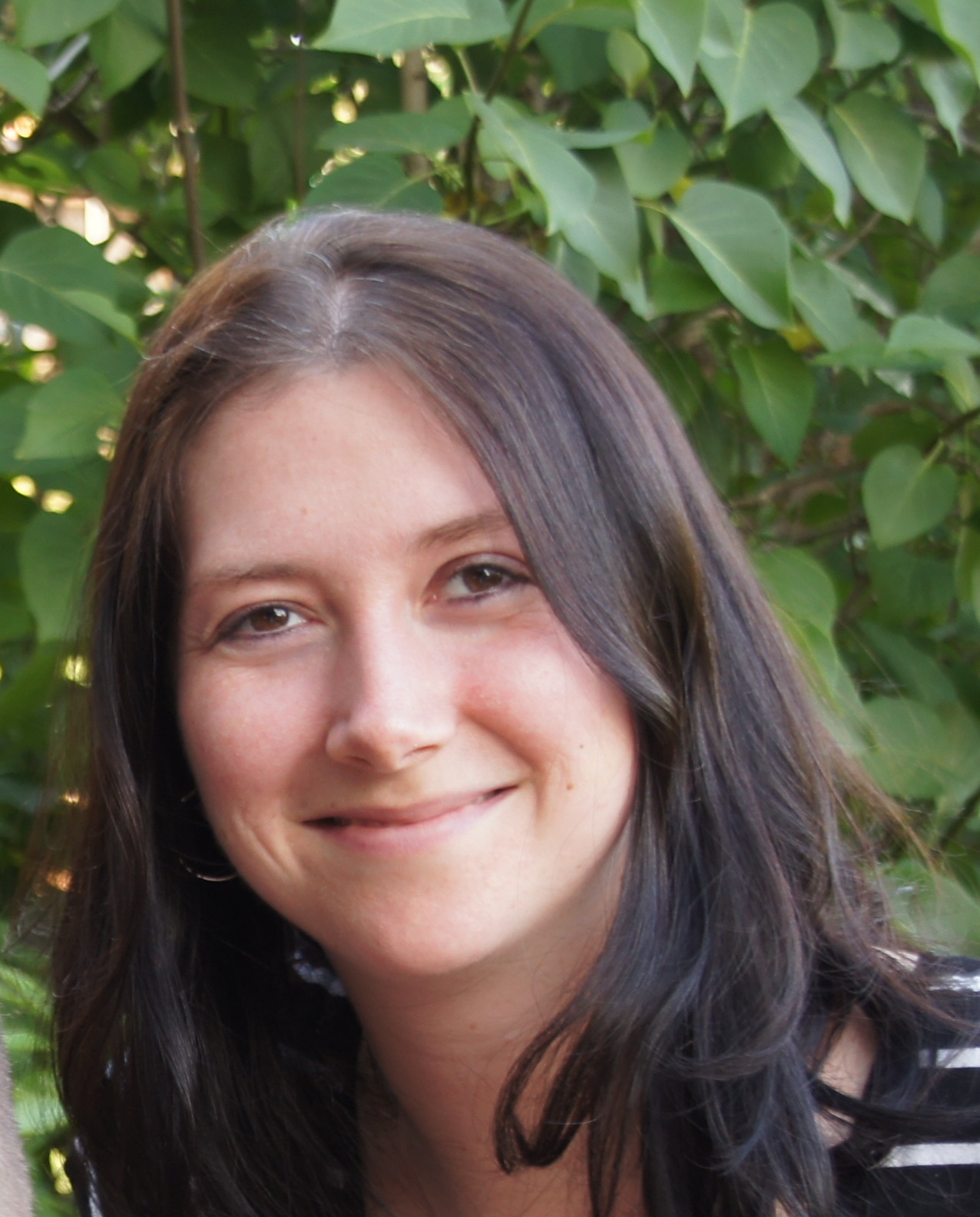
Lena Noack, Post-Doc at the Royal Observatory of Belgium and Planet TOPERS member, obtained a Poster Award at the EANA (European Astrobiology Network Association) conference in Noordwijk, the Netherlands, October 6-9. The title of the poster is "Water-rich planets: How habitable is a water layer deeper than on Earth?" This work results within an international collaboration of Planet TOPERS and the COST Action TD 1308.
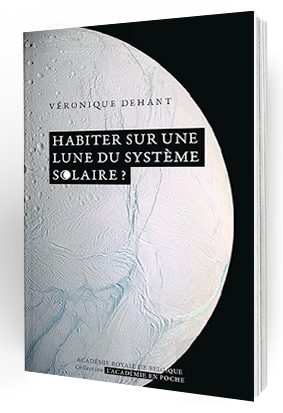
The title is "Habiter sur une lune du système solaire?" - Living on a moon of the solar system?. After having written a small paperback book for "Académie en poche" entitled "Habiter sur Mars ?" - Living on Mars? - and after having given some lectures on the subject (especially in the context of Collège Belgique organized by the Academy) and seeing that the public was passionate about this theme, the planet TOPERS group, and Véronique Dehant in particular, with the help of her team (mainly Rose-Marie Baland, Mikael Beuthe and Tim Van Hoolst) share their interest to the moons of the solar system. These icy moon worlds are indeed very exciting! The images that come from space probes of NASA and ESA space agencies are fantastic! The new book is entitled "Living on a moon in the solar system? ". It is available at the Academy of Belgium.

Planet TOPERS member Lena Noack, Post-Doc at the Royal Observatory of Belgium, has obtained the Best Paper award for her contribution "Habitability, Interior and Crust: A new Code for Modeling the Thermal Evolution of Planets and Moons" at the INFOCOMP 2015, The Fifth International Conference on Advanced Communications and Computation, held in Brussels, Belgium - June 21 - 26, 2015. The award includes a free open-access publication of an extended version of her conference paper, which can be found here: http://www.thinkmind.org/index.php?view=article&articleid=infocomp_2015_4_20_60030.
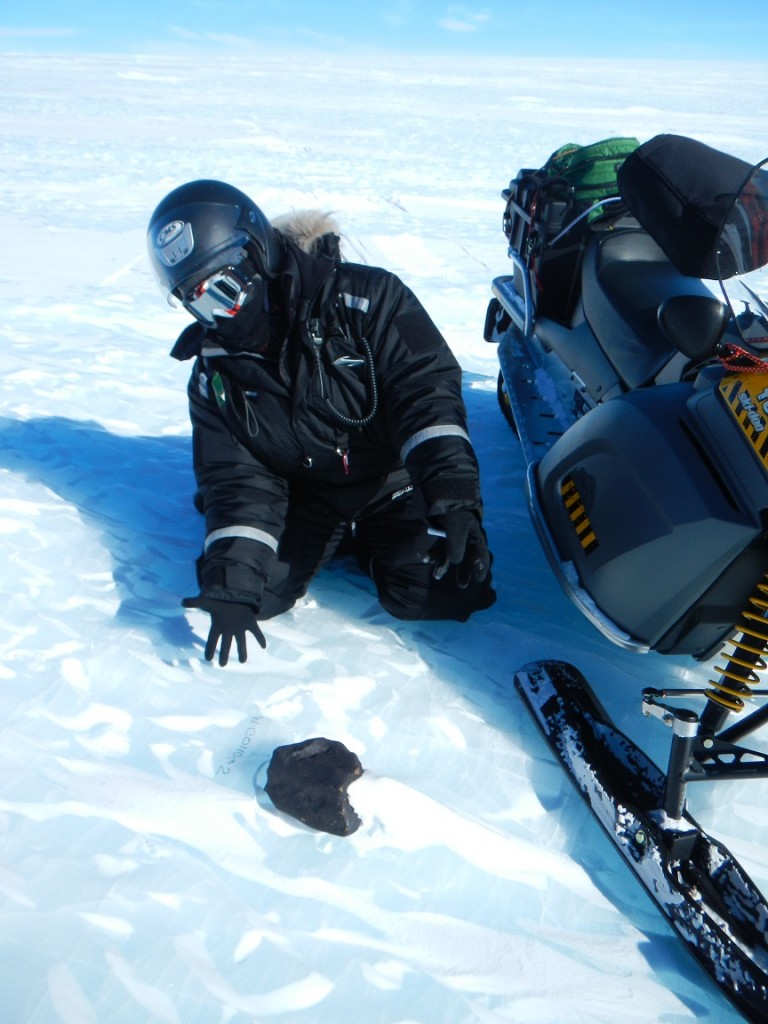
A Symposium on Antarctic meteorites and their curation in Belgium, entitled «From dinosaurs to meteorites» is held on November 14th 2014 followed by the inauguration of the 18 kg Antarctic meteorite in the permanent exhibition.
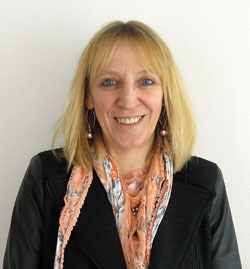
The Coordinator of this IUAP, Veronique Dehant, from the Royal Observatory of Belgium, is awarded as Doctor Honoris Causa of Paris Observatory for her work in Earth and planetary rotation and interior and her close collaboration with the Paris Observatory. The ceremony is held under the authority of the French Minister of Education Najat Vallaud-Belkacem, the rector of the Academy of Paris and the President of the Paris Observatory
(see invitation).
See also her speech, the news on the ROB website, and her CV.
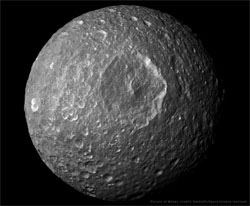
ROB (Attilio Rivoldini) is co-authoring a Science paper on Mimas, a Middle-Sized Icy Moon of Saturn, Could Harbour a Subsurface Ocean. For more detail see ROB website.
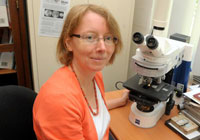
IUAP Planet TOPERS members Emmanuelle Javaux (University of Liège) is becoming Member of the Royal Academy of Belgium. Also Alessandro Morbidelli, Member of the Scientific Advisory Committee of Planet TOPERS, has been nominate as Associate Member. The ceremony was held on May 17th: for more information,
click here and for the photo gallery, click here.
Interview of Emmanuelle Javaux on the Royal Academy website
IUAP Planet TOPERS members Emmanuelle Javaux (University of Liège) and Lena Noack (Royal Observatory of Belgium), together with a colleague from the USA (Timothy Lyons, Univ. Riverside, CA) will give a press conference at the EGU (European Geophysical Union) in Vienna (at the Press Centre, located in the Austria Center Vienna) on Thursday, 1st May, at 11:00 on "Fingerprints of life: from the early Earth to outer space".
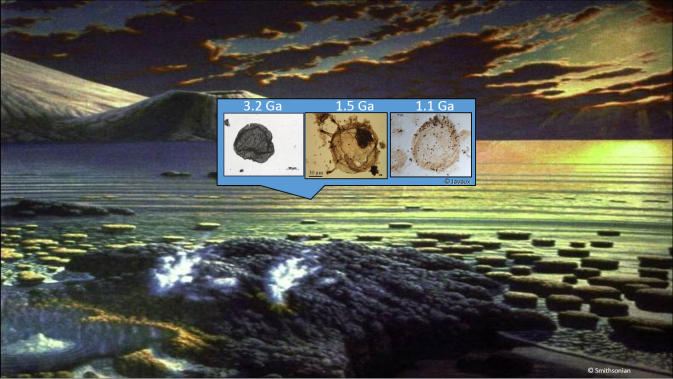
Billions of years ago, cyanobacteria transformed the chemistry of our planet, a period known as the Great Oxidation Event. This episode was a pivotal point in Earth’s history, opening the evolutionary door to oxygen-breathing animals. Until recently, the event was thought to have taken place 2.3-2.4 billion years ago.
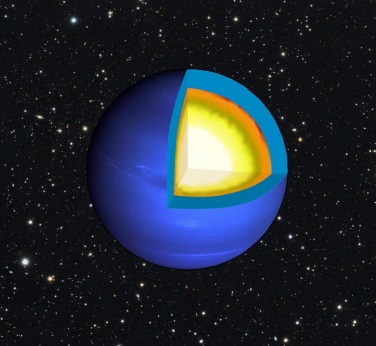 But recent results have pushed this milestone back, resetting the date for the origin of oxygen-releasing photosynthesis and highlighting the long-lasting and dynamic nature of the transition from an oxygen-poor to an oxygen-rich world.
This press conference explores new research on when and how Earth came to have an oxygen-rich atmosphere, and discusses what the conditions for life in our planet can tell us about the possible habitability of other worlds, particularly of ocean-bearing planets.
But recent results have pushed this milestone back, resetting the date for the origin of oxygen-releasing photosynthesis and highlighting the long-lasting and dynamic nature of the transition from an oxygen-poor to an oxygen-rich world.
This press conference explores new research on when and how Earth came to have an oxygen-rich atmosphere, and discusses what the conditions for life in our planet can tell us about the possible habitability of other worlds, particularly of ocean-bearing planets.
All press conferences are being live streamed online. Videos for press conferences will be available from the Stream links at this link.
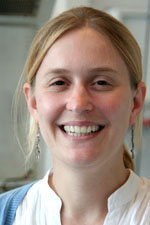
From the initiative of Brussels' Minister for Scientific Research, Brussels-Capital Region has awarded the first "Atomia" Prize2014 for a young Brussels Scientific woman to Vinciane Debaille (ULB member of Planet TOPERS), for her work on understanding early Earth.

Within the Planet TOPERS research program, a field trip in Mauritania was organized with the main objective to collect TTG rock samples for the postdoctoral fellowship project of Fatima El Atrassi (Laboratoire G-Time, ULB), under the supervision of Vinciane Debaille & Nadine Mattielli.
For further information and immersion into the desertic atmosphere of the Amsaga valley, feel free to follow that
link - diaporama

Philippe Claeys (VUB) received the Prize Adolphe Wetrems of the Royal Academy of Belgium for his work in geology and Earth history!
Pascal Rosenblatt (ROB) received the Prize Vanderlinden of the Royal Academy of Belgium for his work in radioscience!
Ceremony: December 14, 2013.

Elodie Gloesener, PhD student on TOPERS Planet, got the Wallonie-Espace Award for her work in the frame of a Master in Space Sciences at the University of Liège on methane and clathrates of Mars (Promoter Veronique Dehant & Ozgur Karatekin). She studied the temperature and pressure conditions allowing clathrates to be stable in the interior of Mars and those that allow the degassing of methane observed in the Martian atmosphere.

Tilman Spohn, from DLR Berlin, our international partner, was awarded with the 2013 Runcorn-Florensky Medal for his fundamental contributions to the study of the interior structures of terrestrial planets and outer satellites and for pioneering work in modelling their thermal evolution.

The ROB, VUB, and BISA have obtained a budget for networking with Russian science institutions (Space Research Institute (IKI) and Russian Academy of Sciences (RAS)) for working on planetary and solar system sciences. In particular the objectives are on the one hand, to better understand the meteorite and comet impacts on the atmosphere evolution of a planet and the influence on habitability, and on the other hand, to prepare the next missions for Mars exploration as well as for the exploration of the icy moons of the solar system.
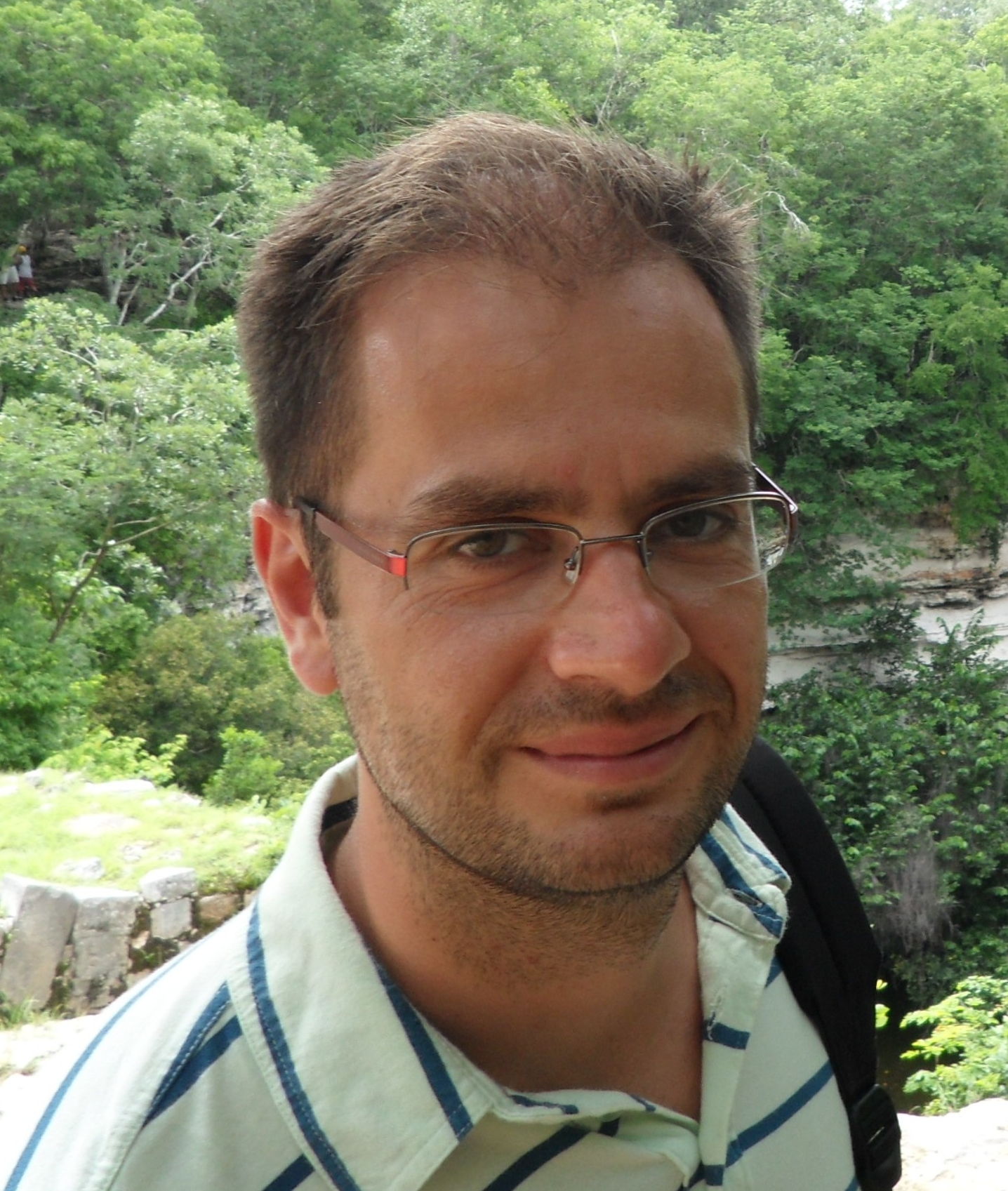
Bernard is a geologist and did his PhD in Belgium at the Université de Liège. He went in postdoc at MIT in the US with a Marie Curie Fellowship before going to the Leibniz Universität Hannover in Germany. His research interests focus on magmatic processes that have led to the chemical differentiation of the Earth and other terrestrial planets, and to the formation of ore deposits. He has been awarded a ‘Back to Belgium Grant’ of the Federal Science Policy to join our research network.
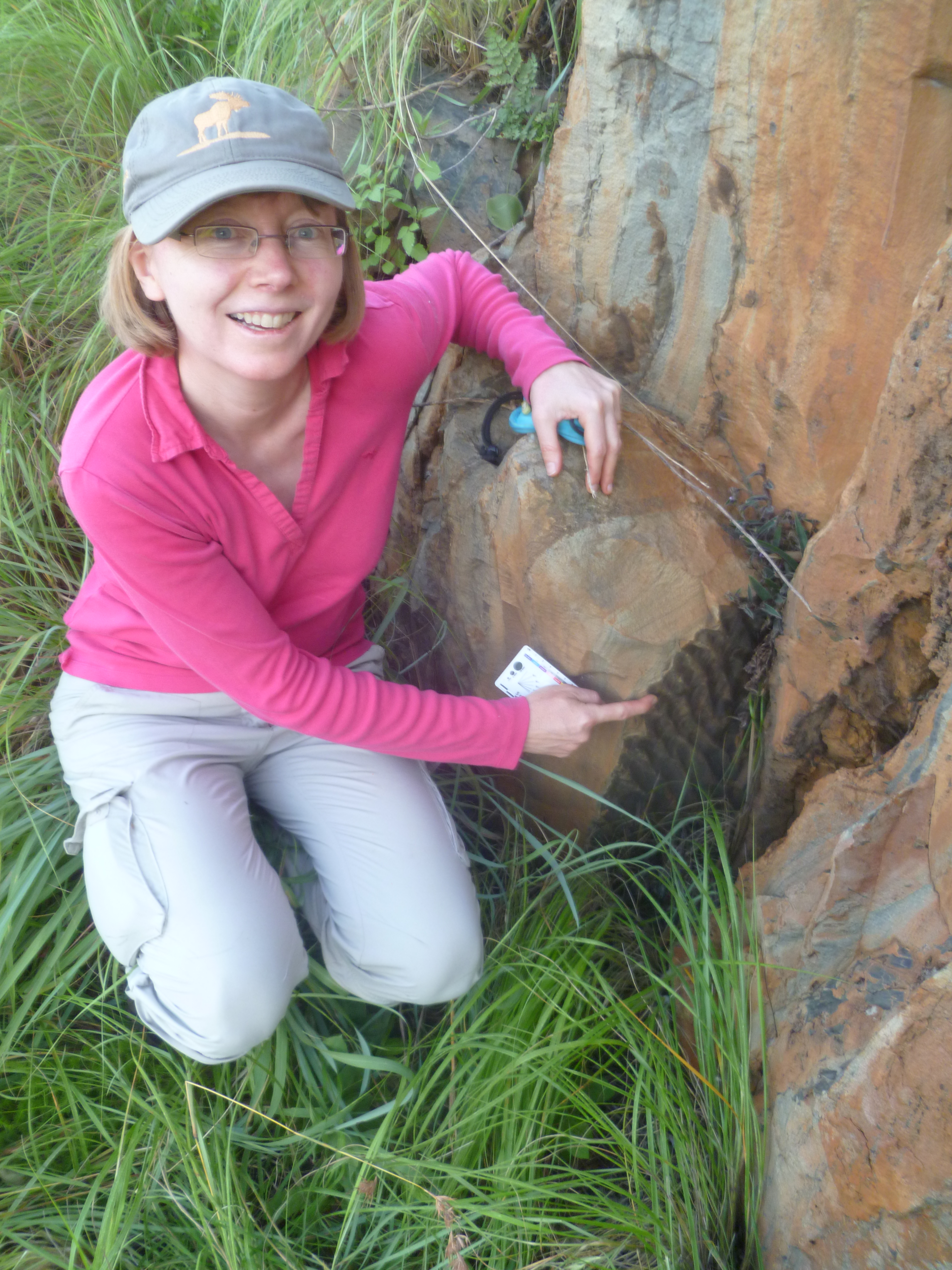
Emmanuelle Javaux founding microfossiles
Nature publication 2010
We have the great honor of welcoming one of our partners, Emmanuelle Javaux from University of Liege, who got one of the Francqui Research Professorship 2013-2017! The theme of the lectures will be "Evolution of Life in the Precambrian and implications for astrobiology" ! See Press releases.
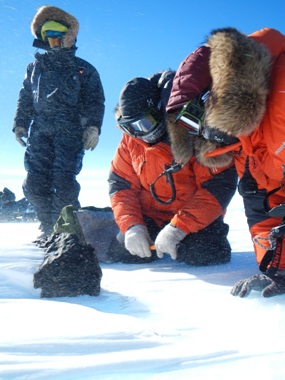
Image of the 2016 Trace Gas Orbiter
(credit ESA)
Vinciane Debaille, Wendy Debouge et Geneviève Hublet de l'ULB, Nadia Van Roosbroek et Harry Zekollari de la VUB sont partis en Antarctique à la chasse aux météorites. Ils ont trouvé une météorite de 18kg, la plus grosse jamais trouvée dans la région depuis 1988! Voir Press releases.
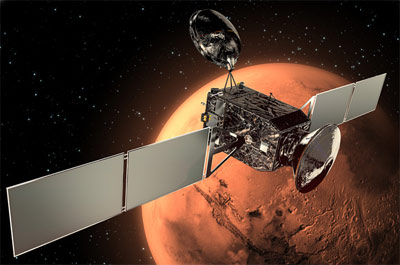
Image of the 2016 Trace Gas Orbiter (credit ESA)
Elodie Gloesener, PhD student on TOPERS Planet, got the Odissea prize for her work in the frame of a Master in Space Sciences at the University of Liège on methane and clathrates of Mars (Promotor Veronique Dehant & Ozgur Karatekin). She studied the temperature and pressure conditions allowing clathrates to be stable in the interior of Mars and those that allow the degassing of methane observed in the Martian atmosphere. Pictures of the ceremony in the Senate can be seen here and the announcement from ULg, here.
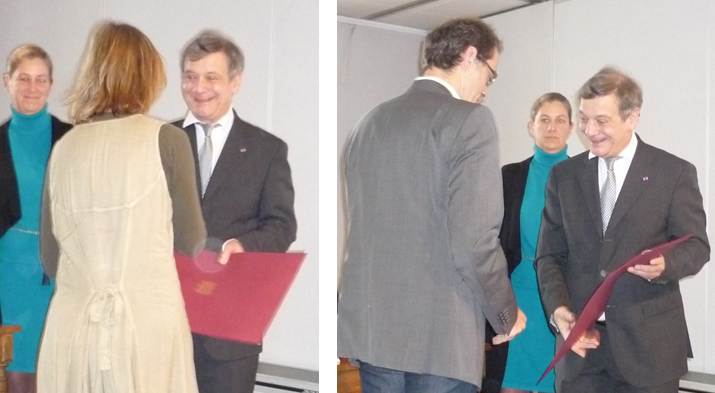 Vinciane Debaille (ULB) received the Prize Baron van Ertborn of the Royal Academy of Belgium for her work in geology, isotope geochemistry and planetary science!
Attilio Rivoldini (ROB) won a competition for the Class of Sciences of the Belgian Royal Academy entitled: One demands an original contribution, experimental or theoretical, on the physics of planets and moons of solar system.
Vinciane Debaille (ULB) received the Prize Baron van Ertborn of the Royal Academy of Belgium for her work in geology, isotope geochemistry and planetary science!
Attilio Rivoldini (ROB) won a competition for the Class of Sciences of the Belgian Royal Academy entitled: One demands an original contribution, experimental or theoretical, on the physics of planets and moons of solar system.
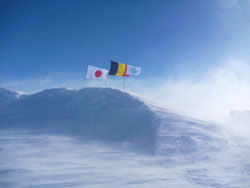 Vinciane Debaille and Steven Goderis in particular are going to collect meteorites! With the hope to find martian meteorites as well!
We shall follow their trip and discoveries on the blog http://antarctica.oma.be/
The first posted message is in three languages, French, Dutch and English. The latest news will be in English.
Vinciane Debaille and Steven Goderis in particular are going to collect meteorites! With the hope to find martian meteorites as well!
We shall follow their trip and discoveries on the blog http://antarctica.oma.be/
The first posted message is in three languages, French, Dutch and English. The latest news will be in English.
The work of the BISA team of the Interuniversity Attraction Pole (IAP) Planet TOPERS has been highlighted by ESA. In this new analysis based on five years of observations using ESA’s Venus Express, BISA scientists have uncovered a very chilly layer at temperatures of around –175ºC in the atmosphere 125 km above the planet’s surface. “The finding is very new and we still need to think about and understand what the implications will be,” says Håkan Svedhem, ESA’s Venus Express Project Scientist. If you are interested, please see "ESA website".
The consortium of the Interuniversity Attraction Pole (IAP) Planet TOPERS has published his first paper! Dehant V., Breuer D., Claeys P., Debaille V., De Keyser J., Javaux E., Goderis S., Karatekin Ö., Spohn T., Vandaele A.C., Vanhaecke F., Van Hoolst T., and Wilquet V., 2012, "From Meteorites to evolution and habitability of planets", Planet. Space Sci., DOI: 10.1016/j.pss.2012.05.018. This paper addresses the evolution of the terrestrial bodies of our Solar System, in particular through all phenomena related to meteorites and what we can learn from them. This includes our present understanding of planet formation, their interior, their atmosphere, and the effects and relations of meteorites with respect to these reservoirs. If you are interested, please see "PSS website".
The Interuniversity Attraction Pole (IAP) Planet TOPERS has been selected in April 2012. Finance support coming from the Belgian Science Policy has been decided on that same date. The IAP will begin in October 2012. The staff of the IAP is beginning the procedure for starting contracts in 1st October 2012. If you are interested, please see "Jobs".
